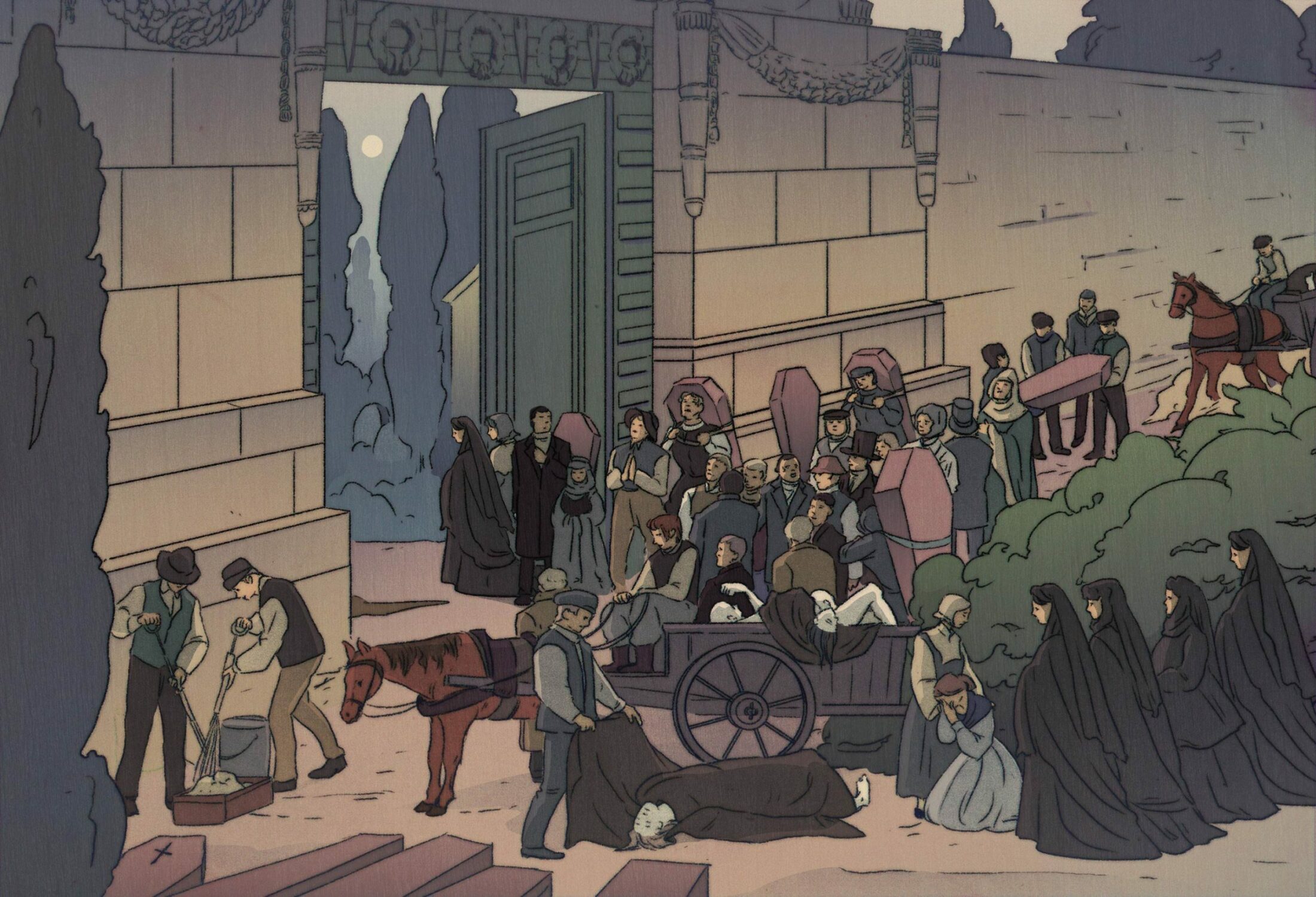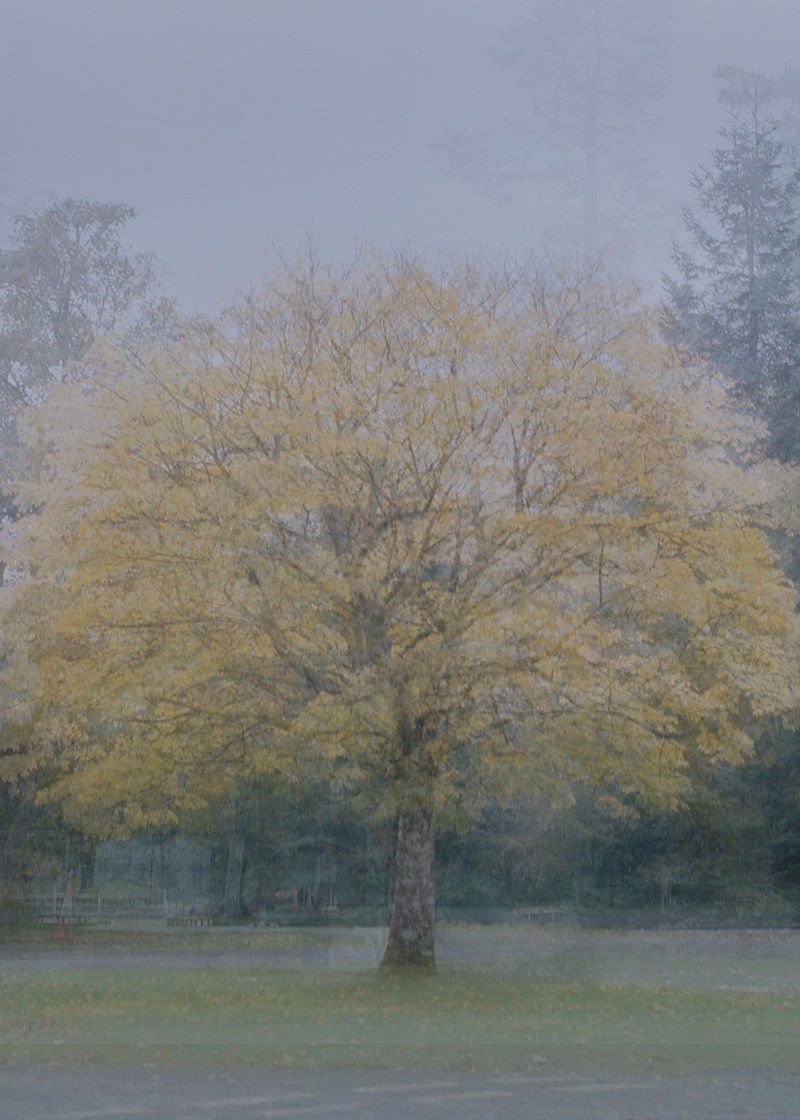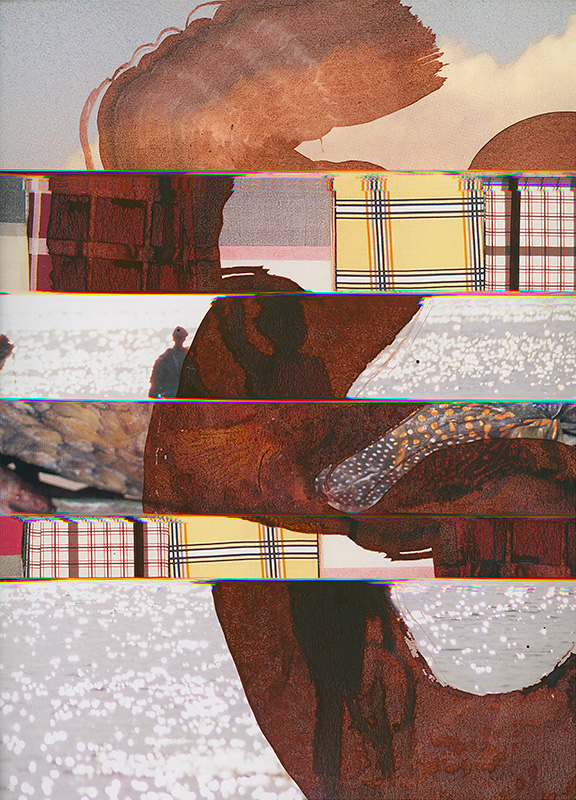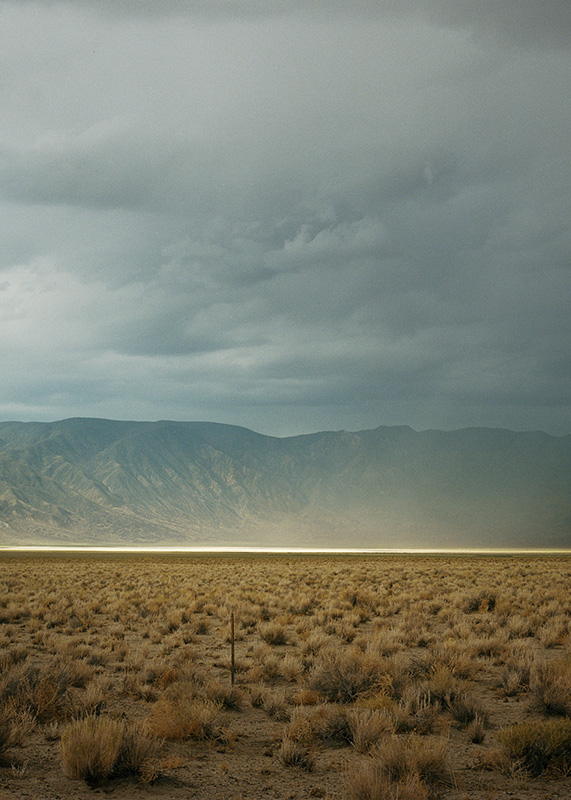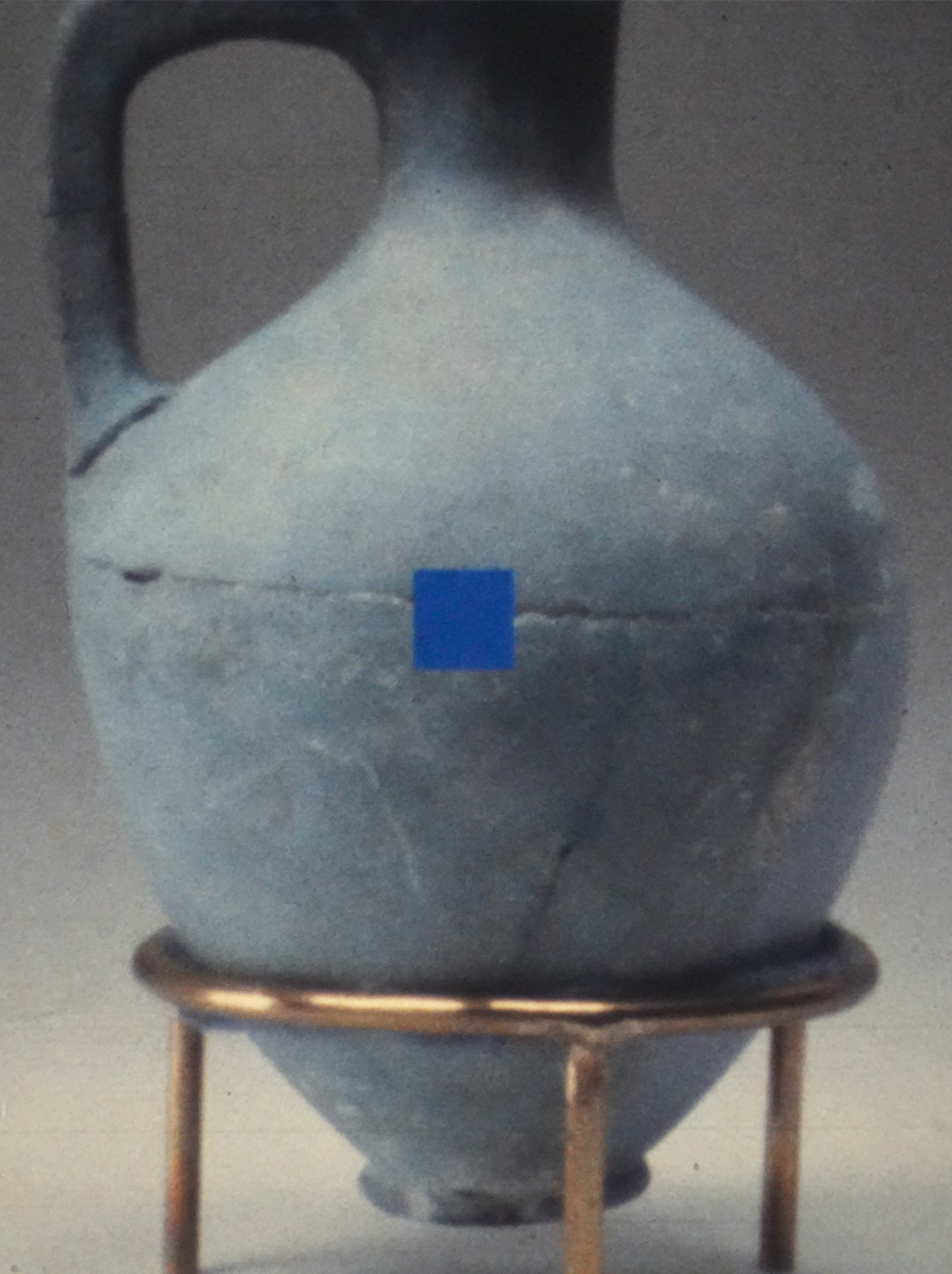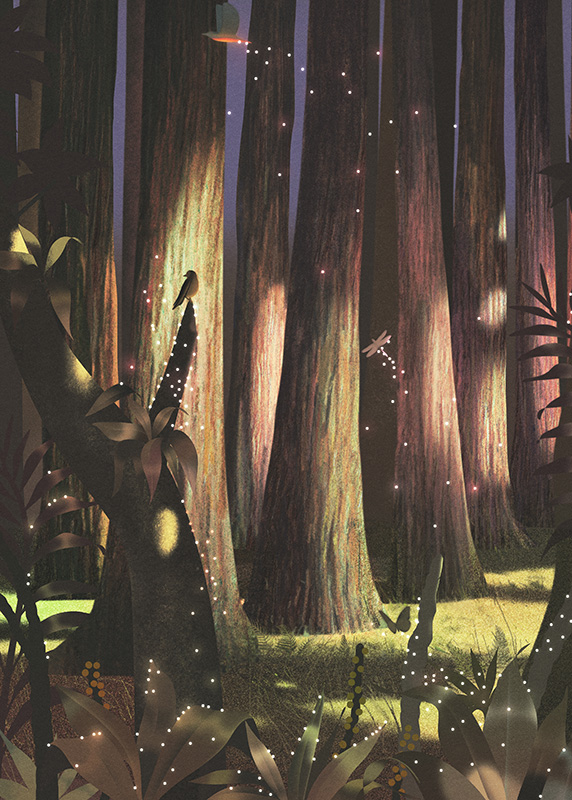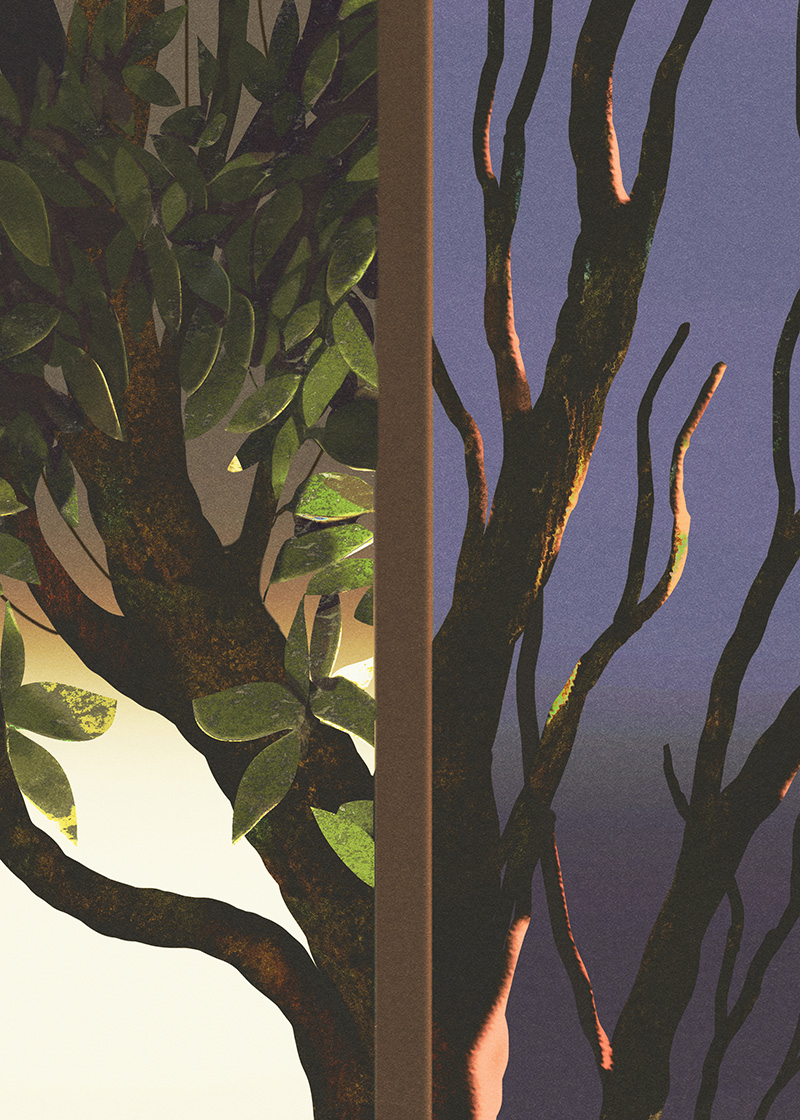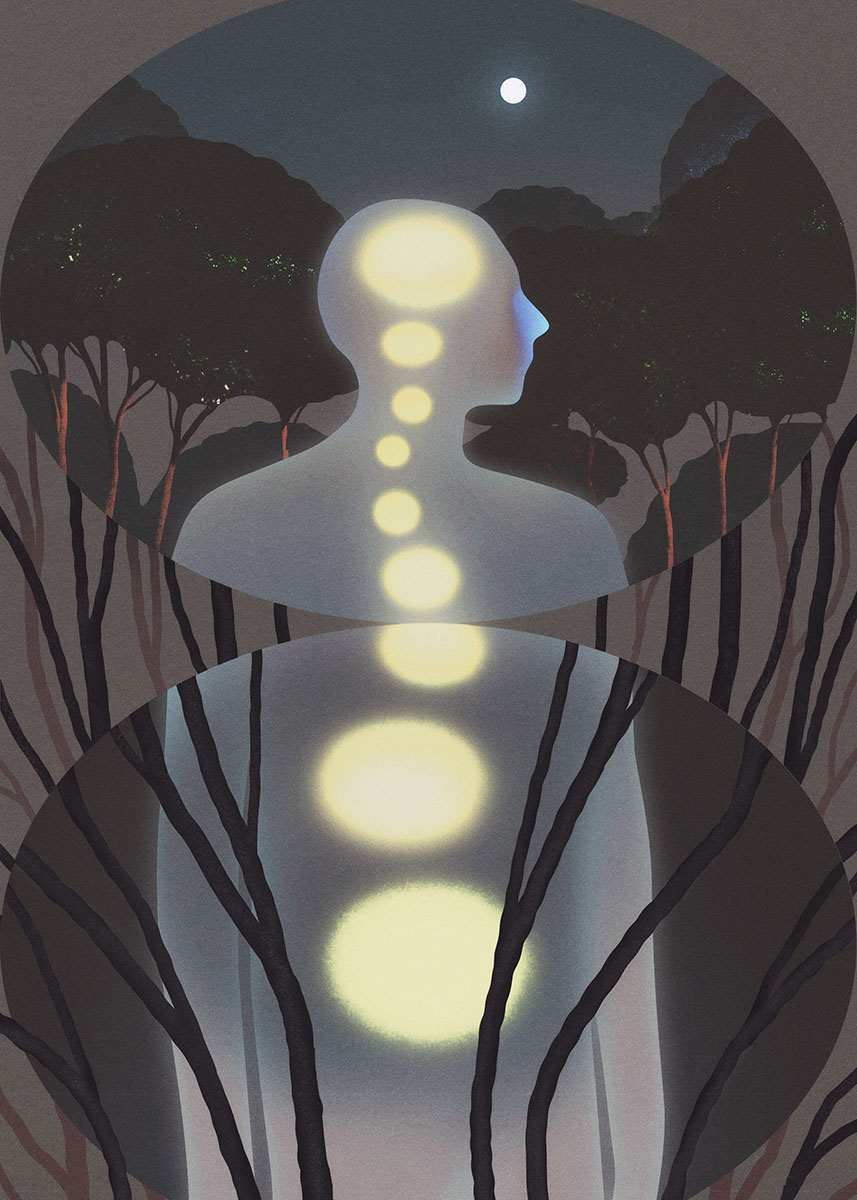
George Prochnik is the author of In Pursuit of Silence: Listening for Meaning in a World of Noise and The Impossible Exile: Stefan Zweig at the End of the World, which received the National Jewish Book Award for Biography in 2014 and was shortlisted for the Wingate Prize. Prochnik is editor-at-large for Cabinet magazine and has written for The New Yorker, The New York Times, Bookforum, and The Los Angeles Review of Books. His latest book Heinrich Heine: Writing the Revolution is forthcoming from Yale University Press.
Maria Nguyen is an illustrator based in Toronto. Maria is a staff illustrator for the Global Press Accuracy Network and has worked for The New York Times, Penguin Random House, Simon & Schuster, The Believer Magazine, and others.
As sirens fill the streets of London, George Prochnik recalls a revolutionary poet’s account of the 1832 cholera pandemic that unfolded in Paris. While watching history repeat itself in devastating refrain, George wonders: What is hysteria? What is necessary passion and courage? How can we respond both lucidly and compassionately as this disaster progresses?
I
Early one morning before London went into lockdown, I walked up Parliament Hill, an elevation in Hampstead Heath with a panoramic view of the long city skyline. That day, the bowl of the sky was gray, but a band of light across the southern horizon steeped the buildings in yellow. Sickly, jaundiced, I found myself thinking. It was as if the infected state of the city had been revealed through some color-coded medical test. In that eerie luster, the skyscrapers themselves, which often appear brash and dramatic, looked just like splinters of ruined pilings after a grand pier had washed away. While I stood there, the wail of ambulance sirens seemed nearly constant. I hadn’t heard anything similar since 9/11 in Manhattan.
In the throes of a calamity, we reflexively find echoes of our predicament in the conditions of the natural world, just as we reach to memory for prior events that chime with our present-day experience. Both impulses speak to an urge to discover order and meaning—even a sinister correlation—in moments of chaos. This desire is not wrong, but we might do well to focus that wish for greater significance on the larger social order we ourselves have constructed in the here and now. Instead of reading omens in the heavens, we could study the patterns of human relations that have been thrown into relief by our general loss of immunity, striving to discern what they reveal about how we could better arrange our existence when the crisis finally abates.
As I lingered on that impressive overlook, gazing down at the array of dim, half-deserted towers, I found my thoughts drifting to a scene from revolutionary poet Heinrich Heine’s account of the cholera pandemic in France in 1832, when he stared down over his beloved Paris from the heights of Père Lachaise Cemetery. It was sunset when Heine traveled up there for the funeral of a friend stricken by the disease. He too had found the light suggestive, describing twilight vapors covering “sick Paris like a light-white shroud.” But Heine swerved quickly from that atmospheric resonance to the sheer tragedy of human affliction—and the loss suffered by the whole world when a city which had become synonymous with the dream of political freedom turned into a site of devastation. Foregoing the notion of personal solace, the poet opened himself to anguished solidarity with a place that had already sacrificed so much for “the temporal deliverance of humanity.” He wept bitterly, then redoubled his commitment to the ideals he felt most inspired by in the country’s legacy.
When Heine later anthologized his report of the plague, together with other dispatches from that volatile time, he expressed his conviction that when “the great mass of the people really understand the present, they will no longer allow themselves to be goaded” by the propagandists of the ruling classes “to hatred and war.” Paradoxically, by keeping his eyes on the scenes immediately before him, rather than seeking cosmic forecasts about the pandemic’s significance, Heine seemed to become more certain of the prospects for a just, even utopian, future in which “the great confederation of races, the Holy Alliance of nations,” would be formed.
Perhaps we today may discover that by refusing to turn away—striving instead to really see this current moment in all its tangled dimensions and harrowing details—we will find ourselves able also to see through it, to the outlines of a genuinely healthier world. Heine’s response to the pandemic provides a model for reflecting on our own reactions as we struggle to understand what is happening around us: What is hysteria and what is prudence? What constitutes foolish swagger and what is necessary courage? What is our personal role in this unfolding cataclysm, not just today but tomorrow, and the day after?
II
In the English-speaking world, Heine is best known today for a few aphorisms: “Where they burn books, they will burn people.” “Experience is a good school, but the fees are high.” “Ordinarily, he is insane, but he has lucid moments when he is only stupid.” Yet his influence on rebellious dreamers in Europe and the United States in the nineteenth century was prodigious. He was Karl Marx’s favorite companion in Paris—and Marx may have adopted features of Heine’s bravura style in shaping his own revolutionary rhetoric. Walt Whitman gushed over Heine, “Oh, how great! The more you stop to look, to examine, the deeper seem the roots, the broader and higher the umbrage.” Heine was free, Whitman declared: “a master of pregnant sarcasm: he brought down a hundred humbuggeries if he brought down two.” Mark Twain tried his hand at translating one of Heine’s ballads. To this day, it’s probably the case that more of Heine’s poetry has been set to music than that of any other German author; his thousands of scored lyrics include compositions by Schubert, Liszt, and Schumann.
Born in Düsseldorf in 1797, Heine spent much of his childhood under the enlightened occupation of the French Revolutionary forces. But after Napoleon’s defeat, repressive Prussian rule was restored to his part of Germany. Heine started balking against the authorities as soon as he could wield a pen. While still a young man, he achieved modest fame as a poet, and notoriety as a provocateur. Over time, in his dual character as wandering minstrel of tender, biting, imaginative love songs and iconoclastic apostle of liberation, Heine became a kind of nineteenth-century Bob Dylan. In 1831, having been deemed a dangerous troublemaker by government agents and finding himself shut out of professional career opportunities on account of his Jewish birth, Heine fled to Paris, which he’d long idealized as his true spiritual homeland.
At first, the city mostly lived up to his romantic fantasies of a festive dancehall-metropolis, its streets rollicking with unbridled humanity. Heine threw himself into a whirl of theater, art shows, voluble meals, and long rambles. Summing up his feelings about the place, he cited a remark by Madame de Staël, the Paris-born woman of letters: “Here one can dispense with good fortune”—the city was itself a colorful charm. Elsewhere he quoted a bit of doggerel: “When the good Lord in heaven is bored, / He opens the window and looks down / On a Parisian boulevard.”
It didn’t take long for some of Heine’s wide-eyed enthusiasm to fade as he grew more conscious of the hypocritical side of the new French ruler’s average-fellow bonhomie. Under the felt cap he wore to show that he was a “citizen king,” the sovereign Louis Philippe concealed a crown of the usual dimensions, Heine wrote, just as the prosaic umbrella he carried hid a scepter. The persistent power of the aristocracy and the terrible poverty, which hadn’t been alleviated by France’s successive waves of revolution, became more apparent to Heine the more he explored his new home. But his love for the French people and their spirited devotion to the causes of emancipation, enlightenment, and equality only intensified.
To stay afloat financially, Heine began writing a series of reports on French affairs for a German newspaper, analyzing in a chatty way the age’s complex political currents. Sometimes he paid homage to Paris as the principal city of “the whole civilized world.” At another moment he excused the mediocrity of France’s leadership by noting that when the public as a whole had advanced so far, it wasn’t really surprising that its representatives hadn’t risen much above the average.
For anyone struggling to preserve a belief in the bright attractions of their chosen home while being honest about its moral failings, Heine’s slightly breathless pirouette between affection and criticism will seem poignant. He kept spotting traces of France’s noble, old revolutionary passions everywhere, even when the government itself had gone rather smugly bourgeois. The intensity of his conflicting experiences and emotions occasionally made him vertiginous. “I am made wholly of phosphorus, and while I drown in a wild sea of men, I also burn by the combustion of my own nature,” he wrote a friend shortly after arriving. But the kaleidoscopic cosmopolitanism of the capital remained irresistible. “There gathers here everything that is great in terms of love or hate, of emotion and of thought, of knowledge and of power, of both happiness and unhappiness, of the future and of the past,” Heine wrote.
Then, less than a year after he’d first set foot in France, the pandemic struck Paris. The same vibrant, indiscriminate mixing that made the city such a dynamic hub left it especially vulnerable to contagion. By early spring, the death rate was said to be as high as eight hundred persons a day.
III
The illness had originated in Asia, the second in a series of major cholera infections to start there, but the first to spread all over the world. It began circulating in Europe and the United States at the beginning of the 1830s, peaking and declining in different places at different times. The speed with which its symptoms overwhelmed patients, and the horror of the torments it induced, shocked the centers of Western civilization at a time when self-confident, rational positivism was on the rise. The notion that with all the recent progress in science nothing could be done either to halt the spread of disease or spare victims its ravaging consequences threatened to destabilize the new social order. How meaningful were the developments that made the exterior of life shine so beguilingly in cities like Paris, London, and New York when these places could be totally overwhelmed by a plague that swept down mysteriously, like a specter from the Middle Ages?
Because the sickness had first broken out in Asia, it was seen in some places as proof of the alien malignancy of the East. In the United States, recent immigrants—many of whom happened to be Irish—were targeted as dangerous agents of infection. In France, the disease stoked social tensions that had been simmering just below the surface for years.
The widespread incidence of illness in densely inhabited quarters led to debates about whether the poor, with their unseemly habits, were responsible for incubating the cholera, or whether the blighted environments they were forced to live in explained the high numbers of infected people in these districts. One prominent French journal declared flatly that “all individuals affected by this epidemic disease belong to the class of the people. They are shoemakers and those working on the manufacture of woolen garments. They live in the dirty and narrow streets of the Île de la Cité and the Notre-Dame quarter.”
Doctors in the big cities generally had a basic understanding of the risks posed by unclean living conditions, and it was understood that the pandemic was spreading along paths of global trade and travel; but the specifics of its transmission were unclear. Quarantines and sanitary cordons were imposed sporadically, sometimes sloppily, and occasionally these incited popular disturbances. Even where lockdowns on people’s movements were rigorously, uniformly enforced, the disease kept spreading. Without any reliable cure, all sorts of novel therapies based on sketchy speculations were attempted, some of these, like purgatives that exacerbated patients’ dehydration, only worsened the effects of the illness.
When the disease first appeared in Paris, Heine tried to carry on working as usual. In a manner that some of us today might find familiar, he struggled to keep his head down in the project that he’d begun before sickness arrived. He’d been immersing himself in a large, profound subject: What do people really mean when they speak about revolution? Why do people rise up against their governments? Even though the revolution in France had formally ended, Heine wondered whether—if its purpose hadn’t been accomplished—it could truly be considered over. Drawing on his readings and what he’d witnessed firsthand in Germany, he decided that revolution was the consequence of a mismatch between sociopolitical forms and the people’s understanding of their fundamental rights and identity. When the growth of ideas or culture among the public no longer aligned with “its old established institutions,” there resulted “a combat in which the latter are overthrown,” and this was called a revolution, he wrote.
At the outset of his analysis, one senses Heine straining to stay focused on his subject, but as the essay continues, an odd thing begins to happen: Heine’s disquisition starts to be pervaded by the language of what’s taking place around him. Until the French Revolution is genuinely finished, the “national malady is not perfectly cured,” he argues. So long as the administrative bodies of the state are not reformed, “the sickly and excited people will often relapse … be subject to attacks of burning fever, when they tear away the tightest bandages.” Heine’s words become increasingly overtaken by vocabulary from the realms of sickness and medicine, until suddenly he breaks off altogether. What he’s written thus far must serve as a preface for a later article, he announces, since the present moment has become so importunate that he feels compelled to write about it directly.
Heine then revealed that while he had been composing the essay, he’d been shaken by the cries of a neighbor who was dying of cholera. It was too much to block out. Even when he wasn’t consciously aware of absorbing the sound, that noise of the scythe of death sharpening nearby was nauseating. People were in a panic, and those with means to do so were fleeing Paris, Heine recounted. As for himself, he had no interest in showing off his bravery by hanging around town. If there were nothing that could be done, he’d be gone. But then a dear friend would be left alone and seriously ill, he reasoned, and so he remained. Heine refused to ascribe any heroism to the act of staying in a disease-stricken city; it was, he felt, a matter of simple human responsibility. If there’s help that can be tendered to others more vulnerable, then one must obviously stay. (In fact, Heine selflessly nursed a younger cousin back to health from this sickness at enormous personal risk.)
We should recognize that the world we’ve made is more malleable than we usually conceive it to be.
One thing the disease taught Heine early on was how rapidly the functions of public spaces could be changed when need arose. For instance, a large municipal building with wide open rooms that was ordinarily given over to convivial gatherings had transformed into a place where huge numbers of white sacks were piled on high, each bag containing a corpse. Various officials moved about inside, tallying up the dead, while ordinary citizens came searching for relatives. It was a pitiable business.
We should recognize that the world we’ve made is more malleable than we usually conceive it to be. It can be reconfigured overnight to cope with an emergency; but the impermanence runs both directions, and things may also be switched back again. (As soon as the cholera had passed, Heine added, the “roomy halls” were filled once more with merry people springing about, gossiping, “shopping, laughing and joking.”) We can’t afford to sentimentalize our material surroundings in a crisis, and we might find something magical in the plasticity of our manufactured world.
IV
The pandemic hit London before Paris, and because there hadn’t been reports of huge numbers of deaths in England, the French were inclined to be blasé about the plague, Heine observed—even to make fun of it. Parisians decided that the terrible reputation of the disease would be cut down to size there, just as the scintillating metropolis had taken down the reputation of other great characters. Alas, the disease had to decimate the place to be taken seriously, he wrote. Once it really began spreading—owing to unsanitary conditions, the public’s “excitability,” their “unrestrained frivolity,” and the lack “of all preparations and precautions whatever”—the disease took a particularly heavy toll on Paris.
Heine noted that the pandemic’s arrival was officially announced on March 29—coincidentally the same calendar day on which I find myself transcribing his reflections. And I feel bound to interrupt my historical account here, just as Heine felt constrained to break off his theoretical musings, because of the intervention of the present day.
I have a son who has worked for several years as a paramedic with the New York City Fire Department. Speaking with him on the phone just now about the heinous conditions in which he and his colleagues have been laboring in the midst of our own pandemic—due to a total, and totally preventable, lack of preparations—I can’t help feeling stunned by how little has changed since Heine’s day. All of our advanced capacities to foresee the likelihood of a disaster of this nature mean nothing if political considerations are allowed to override scientific knowledge. In 1832, the understanding of disease transmission was obviously far less reliable. Doesn’t this make the willingness of our own policymakers to downplay and neglect evidence even more reprehensible? Have we actually gone backward psychologically? Looking forward, what will this experience mean for our response to, for example, the onset of climate change, that slow-building disaster which this fast-moving pandemic seems to preview?
My son told me that, while he’d been in the station during his last shift, he’d watched as pairs of his coworkers left their ambulances. Time and again, one paramedic would be sent home, coughing and feverish, while the partner who’d been sitting alongside the infected individual for hours would immediately be reassigned to another dispatch unit. Many New Yorkers don’t realize that an enormous, acutely vulnerable population relies on the city’s emergency healthcare system for their regular medical care, since, in the privatized system, this is their most dependable point of access to doctors. Now when these individuals call 911 for any reason, they are being met by paramedics who may well be active carriers of the virus. The realization that the first responders have themselves become agents of infection among the poorest, most fragile city residents, even as they try to do good, is an emotionally overwhelming idea for my son; as is the fact that vulnerable people are still wandering around in his Brooklyn neighborhood, despite the deadly hazards that this pandemic poses to them.
Even within his own department, he acknowledged, a mood of jaded skepticism about the seriousness of the virus had prevailed until he and his coworkers saw, with their own eyes, colleague after colleague fall ill. The speed with which they went from denial to raw fear was dizzying. When those in charge of the paramedics grasped the magnitude of what was happening, it was too late to hold back the avalanche. By now, my son said, it was clear that if supervisors began ordering widescale testing, the rate of infection would prove to be so high that New York’s emergency healthcare system would collapse once all the unwell medics went home into self-isolation. “They gave up on containing the disease before they even tried,” he said. By not testing, the officials also preserved plausible deniability.
Before my son hung up, he began apologizing for the lengthening gaps in his conversation. “I’m sorry, I’m just very sad,” he said. “It’s just very dark. It’s very dark.”
The next day I learned that he was sick with symptoms of Covid-19.
V
March 29, 1832, was a day of beautiful sunshine, Heine recalled. The boulevards were full of Parisians hustling and fluttering happily about. Since it was carnival season, some people were in masks and costumes, a number of them brazenly mocking the disease. That night, the balls of the upper classes were more crowded than ever. The laughter was so loud it drowned out the music. It was hot in the packed rooms, and everywhere people were calling for ices and chilled drinks. Suddenly, at one of these huge celebrations, a famously jolly harlequin felt his legs become too cold. He tore off his mask, and his face was violet-blue—a notorious symptom of the illness. The laughter died away. Later that same night, some of the carriages that had brought the revelers to the ball ended up bringing those who’d hired them to the hospital. The partygoers had been in a kind of euphoric denial, which now dissolved into terror. Once people realized the gravity of the plague, they began going psychologically haywire. Heine’s record of the pandemic shows the fine line between taking a disaster seriously enough and becoming consumed by hysteria.
New hospitals were established, and a sanitary commission was created. The commission began identifying modifications to daily life that could be introduced to start controlling the outbreak. Homeowners in Paris were used to putting their refuse out in front of their homes in great heaps. These garbage piles would then be picked through by so-called “ragmen” for objects they could salvage and resell. Officials from the sanitary commission realized that these mounds were potential sources of infection and decided that they should be hauled outside the perimeter of Paris to different locations where the ragmen could travel, if they wanted, and still engage in their business of fishing for treasure. But the ragmen complained that this would mean a significant reduction in their trade and claimed that the intervention marked a violation of their traditional rights. They behaved no differently in this regard than did nobles and chiefs of corporations who tried to clutch onto their inherited privileges, Heine wrote. All the “old abuses” that people clung to for private, mercenary ends were infectants of the body politic. They had to be cleared away if the community as a whole was going to move forward to a more salubrious future, he argued.
Instead, when the ragmen were thwarted, they began rioting together with the women who marketed the refurbished goods that got pulled out of the trash. The bloody street battles that ensued became a significant problem in their own right. Once this uproar finally died down, new social challenges emerged, kindled by those who wanted to stoke chaos. Despite all the suffering, it seemed the disease had not caused quite as much damage as was desired by certain people who thought they could exploit the social breakdown for economic gain or for political reasons. These individuals therefore began to spread rumors that many of those who had died had in fact not passed away because of illness, but because they’d been poisoned. According to the scandalmongers, agents of what we might call the “deep state” had found ways of slipping poison into the supplies at vegetable markets, bakeries, butcher shops, and wine stores. Heine noticed that the more extraordinary the conspiracy theories were, the more people latched on to them. In a situation where reality seems to be collapsing around us, the wildest explanations can appear the most plausible.
Finally, so that they wouldn’t appear to be ignoring popular fears, the police felt obliged to start publishing proclamations to the effect that they were hunting down the poisoners. This only served to strengthen belief in the truth of the rumors, and the public grew frantic. The poor, in particular, were victims of the slander; in some instances they became too frightened to eat or drink. To the city’s most exposed population, “it seemed as if the end of the world had come,” Heine wrote.
In this situation of utter misery, it was inevitable that the people would start searching on their own for the perpetrators of this imaginary crime. Fresh rumors arose that the guilty ones congregated at specific points around the city. Groups would travel to these places looking for suspicious people. In a few instances, the mobs hurled themselves at individuals who were seen carrying unfamiliar substances. Thus, a man carrying a packet of white powder he’d purchased as medicine against the disease was attacked and killed. There were other innocent victims as well.
Heine’s narrative tracks the way that a large-scale crisis enables the worst factions of society to sow dissension. Our personal responsibility, he suggests, is to fight against both terror and resentment, to attain the most lucid perspective possible on unfolding events. In part this means refusing to despair of human nature. Under the circumstances, Heine couldn’t help sympathizing with the public’s fear that human killers might be aggravating the effects of the disease, even while he condemned the mob vengeance.
After the conspiracy theories had burned out, the mood in Paris switched from febrile to grim. “A stony stillness as of death” could be seen on every face, Heine wrote. Almost no one could be seen walking on the normally thronged boulevards any longer, just a few people hurrying by with handkerchiefs pressed over their mouths. The theatres were all “as if perished and passed away.” When Heine stepped inside one of the few salons that had stayed open, people were amazed to see him still in the city. His homeland was Germany, they cried. He didn’t have to be there with them in the nightmare. Virtually all foreigners had left Paris by the end of March. Along with this exodus of émigrés, everyone with money had abandoned the city for their country places. Heine reported that at a certain stage in the pandemic 120,000 passports were issued in short order.

It’s not hard to see how quarantine might become, alternately, a metaphor for prison or a self-healing retreat, depending on one’s socioeconomic circumstances.
While the cholera wreaked a far greater toll on the poor than on the affluent, the wealthy made sure that they were preemptively shielded in every possible way, he wrote. The people “murmured bitterly when it saw how the rich fled away, and, well packed with doctors and drugs, took refuge in healthier climes.” As another contemporary observer put matters, by dying in vastly greater numbers than their rich counterparts, the impoverished citizenry was “giving the lie” to “the doctrines of equality that had been preached to it for half a century.” The poor realized that “money had become a protection against death,” Heine concluded.
Along with the selfishness of the upper classes, the people had to contend with the viciousness of certain religious authorities who spoke about the plague as just punishment for their political discontent. And if that weren’t enough, they had to navigate the representatives of different popular movements of the day that each claimed to have the magic key to warding off the illness. One group felt that since they were the representatives of social and technological progress, none of those who were truly attached to their principles should really have reason to worry about infection. Faith in the latest data-driven calculations would save them. Another group composed of those who still nostalgically worshipped the spirit of Napoleon felt that by being true to his memory they would be preserved against harm.
Despite all the incendiary news about the disease, promoted through malicious gossip and misconceived theories, it was unquestionably true, Heine wrote, that increasingly, wherever one looked on the streets, there were mourners following funeral carriages or, even sadder, hearses with no funeral procession. Eventually, even furniture wagons and hackney coaches—the equivalent of moving vans and regular taxis—could be seen carrying coffins.
Heine’s account of the pandemic closes with a description of the day he went to call on a friend only to discover that his friend had died of the cholera, and his corpse was being loaded onto a hearse at that very moment. Having been unable to visit the man while he was alive, Heine decided to at least pay his farewells at the interment, so he got in a carriage and headed to Père Lachaise. At the gates of the cemetery, he encountered an enormous traffic jam of several hundred vehicles en route to different funerals. “I could see nothing but literally sky and coffins,” Heine writes. Unable either to enter or to escape, he waited in place for several hours. To pass the time, Heine asked the coachman next to his own carriage whose corpse he was bearing and learned that it was a young woman whom Heine had happened to find himself alongside of in a carriage once before, several months earlier, on the way to a ball. Then, too, his coach and hers had been waiting to enter a gateway. Only, on that occasion, she had leaned out the window, her head decked with flowers. The woman’s “lovely, lively face lit by the moon” showed “the most charming vexation and impatience at the delay.” The thought of her complete stillness now overcame him.
A person might, in theory, learn how to die by attending at deathbeds, Heine wrote; but one of the horrors of this plague was that the swiftness with which it brought death eliminated the moving scenes of loved ones gathered around a dying person in their last hours. One was only able to discover how to be buried in quicklime, from which there was no lesson to be drawn except shock and sorrow.
When his carriage was finally admitted to the graveyard, Heine immediately climbed away from the tombstones to the cemetery’s highest hill and looked down over the beautiful city that had conjured so many idealistic reveries about humanity’s future. Instead of thinking about his individual mortality, he concentrated his emotions on the populace en masse, and his thoughts gradually turned to justice here on earth. Just as suddenly as he’d earlier broken off the essay to report on the events of the day, he returned to the former article. Only he did so now with a meditation on Thomas Münzer, the radical Reformation-era theologian, which gave a more visceral, impassioned edge to his previous discourse on the logic of political insurrection. “The great men are themselves the cause that the poor man is their enemy,” Heine wrote, quoting Münzer’s plainspoken commentary directly. “And if I, saying that, am rebellious and a fomenter of strife, so let it be!” Münzer had the audacity to believe that the gospels “promised not only happiness in heaven, but also equality and brotherhood unto men upon earth,” Heine announced in his post-plague memorial to this figure. Though he returned to the subject that had preoccupied him before the cholera, he didn’t pick up where he had left off. Rather, Heine made a centrifugal return, embracing a wider, politically prescriptive vision of human commonality. He’d seen through the inequitable distribution of suffering to discover a validation of our highest democratic aspirations.
VI
Heine’s responses to the 1832 pandemic fell into three main categories, each of which can be applied to our own predicament. First, give whatever practical help you can to those affected by the sickness. Second, look around you and take careful note of how the illness is manifesting among different individuals and across distinct social groups. Third, view what has happened as a call to change the conditions of society that allow certain parts of the population to suffer its effects disproportionately.
All the insights Heine’s example provides are straightforward. He reminds us that our institutions and public spaces should conform to our vital needs, not the reverse. He shows that the imperatives of compassion and of heeding the best available scientific advice are complementary, and he charts how paranoia and conspiracy theories become lethal scourges in their own right—especially at times when the social order is fracturing. These are simple messages, but since one unavoidable effect of an engulfing disaster is that it disorients us, it can be useful to consciously remind ourselves of basic ethical principles. They provide compass points in the maelstrom. Ultimately, Heine reminds us that the larger meaning we wrest from a crisis that shatters normal routines is in our hands to determine. It is not the property of the illness itself. The event can point the way toward greater liberation, or toward more oppression, depending on our own behavior and our commitment to holding our leaders accountable through each of the difficult days still to come.
And yet, even taking these reminders to heart, most of us confront another dimension of struggle in navigating this pandemic: The experience infuses us with wild emotion, and it may not be enough to simply keep telling ourselves to remain as rational as possible. We are caught in the whirlwind from which primal myths and nightmares arise; our passions will have a voice here. Might this savage onrush of feeling, which leaves us painfully naked to the world, be channeled toward some purposeful vein of reflection?
Here, as well, Heine’s example merits consideration, in particular what he has to say about his own vocation: “In the breast of the writers of a people lies the image of its future,” he wrote. According to Heine, the writers’ heightened attentiveness, fed by acute emotional receptivity, allowed them to detect the signals of changing times. They were attuned to the messages that swept “through the air like the silent secret of a telegraph.” The inflamed sensitivities induced by a world-historical crisis may imbue the larger population with a touch of that poetic gift Heine described, which he also likened to the power of ancient prophets, who were known for their sacred frenzies. His own literary journalism, replete with metaphorical renderings of current events, resembled that biblical tradition wherein the prophecy is less predicative than an admonitory caricature of the present day.
Is humanity’s larger environmental peril being foreshadowed in this drastic event?
From the start of his time in Paris, Heine’s love for the city coincided with growing awareness of the desperate poverty of the masses. He saw also that France’s new monarchy, with its bluff, shallow liberalism, only addressed this outrage with cosmetic palliatives, glossing over the divide between haves and have-nots. Under the existing system, it was clear that this split would continue to expand until it unleashed a wave of apocalyptic violence. Although Heine’s sympathies lay with the people, this prospect appalled him. He once stated that he admired Robespierre but didn’t “want to live under the regime of such exalted ones; I would not be able to bear being guillotined every day.” In fact, he added, no one had ever been able to bear this scenario in which the French Republic was victorious by triumphantly bleeding itself to death. Something had to be done now to forestall that fate: thus his hope that if he were able to vividly communicate to others the unsustainable conditions of contemporary life, a revolution of consciousness might be effected that would provoke social change in a less bloody manner.
When the pandemic came to Paris, Heine realized that it brought down the façade of tranquil normalcy and allowed the anatomy of society to be scrutinized. Indeed, at the beginning of April 1832, contradicting his claim that he remained in Paris strictly to take care of a friend, he confessed to his publisher that he too might have left France, “were it not that in the popular mood created by the cholera very important things may happen.” For all its tragedy, the disease also provided an unprecedented opportunity to see where society was currently headed—and to change course before an event of yet greater mass destruction intervened. In the midst of the illness, Heine saw that “the disaffection of the poor classes has no limits” and understood that this sight was in some way oracular.
VII
By exposing the intolerable living standards of the working classes in Paris, the cholera had given Heine a glimpse of the future: there were too many people living in too severe a disadvantage for the status quo to persist. The only thing in doubt was the type of revolution that would occur. Today, as cities around the world, gripped by the current pandemic, reveal dystopian features that are ordinarily masked, we might give our own prophetic imaginations space to unfold. Is humanity’s larger environmental peril being foreshadowed in this drastic event? Will it trigger an eruption of compassionate, ecologically-dedicated politics? “Thought wishes to become deed; the word wishes to become flesh,” Heine wrote elsewhere. He refused to rein in his own speculations. “Let them take on whatever terrible forms they will,” he enjoined. “Let them storm through all the lands like a frenzied troupe of Bacchantes … let them break into our hospitals and drive the old, sick world from its sick bed.”
It’s no wonder that, faced with a consuming emergency, everything we look at seems to tremble with significance. This charged mental state is another factor in our tendency to find portentous hints of our fate in the sky. Before Heine made his final observations from his perch in Père Lachaise Cemetery, he wrote that the last rays of the setting sun appeared to bid him “a sad goodbye.” Light as such seemed to be taking leave of the world.
The technical phrase for crediting nature with human emotions is “pathetic fallacy,” a term invented by John Ruskin to critique this habit in poets and painters. Nature didn’t really have these emotions, Ruskin chided. The fallacy was engendered by “an excited state of the feelings, making us, for the time, more or less irrational.” In Ruskin’s view, succumbing to such agitation only led to inferior art. But this blanket dismissal precludes the possibility that certain dramatic states of emotion might elevate our perceptions in the old visionary manner that Heine saw as sociopolitically dynamic.
When I looked at the sallow sky from Parliament Hill and saw it as sickly, I was a hair’s breadth away from saying “the gods are angry.” Perhaps the problem with this attribution isn’t about identifying emotional echoes of our moods in the natural world—which we are, after all, a part of—but rather the misallocation of blame that can follow such projections. (It’s the vengeful deity up above, or the contaminated stranger in our midst that endangers us, not our own actions.) We must watch for verbal conflations that narrow instead of enlarging our empathetic scope. The same syndrome can result from looking on specific illnesses as outgrowths of a person’s character type.
In an influential essay written in the wake of her cancer diagnosis, the cultural critic Susan Sontag warned against the dangers of applying metaphors to illness: they clouded one’s view of the actual ailment a person was suffering from. She based her argument on Aristotle’s definition of the term—“giving the thing a name that belongs to something else”—illustrating how, when attached to sickness, these figures of speech could deplete an individual’s psychological will and make more difficult the social survival of those enduring a biological ordeal. Military metaphors, for instance, become a means of stigmatizing the disease and, by extension, the individuals who carry the illness, Sontag cautioned.
Sontag’s observations come to mind when I hear politicians in Europe and the United States repeatedly describing their countries and, indeed, the entire world as now being “at war” with the disease. Evidence continues to mount of how this military metaphor is lending itself to the stigmatization of certain social groups, in particular people of Asian origin and refugees, just as it’s clear that the burden of this virus is falling most heavily on the poor. Lockdowns can undoubtedly help to slow the spread of disease; but what a range of implications that phrase has, depending on whether someone is living in a reasonably comfortable private home or is confined to cramped, under-provisioned public housing! Even if at some point there’s no choice but to impose universal restrictions on movement, the consequences are hardly universally commensurate. Rather than a levelling effect, these measures cast the inequalities we tacitly accept in our regular existence into stark relief. It’s not hard to see how quarantine might become, alternately, a metaphor for prison or a self-healing retreat, depending on one’s socioeconomic circumstances. In the aftermath of this plague, our political structures will be in even more dramatic flux than was the case before the pandemic began. We will have new opportunities to address our society’s disparities, and we must seize them.
Similarly, while the decision by various world leaders to refer to the virus as the “invisible enemy” is understandable, since the term stresses the need for vigilance about its ongoing transmission, it also serves as a convenient cloak around governmental responsibility. If the virus itself can’t be perceived by the naked eye, then the systems and individual choices that stripped bare or neglected our institutional fortifications against such an onslaught—the hands that opened the gates to this adversary—are all too apparent.
Rather than approaching this illness as a metaphor for a mysterious adversary lurking everywhere and nowhere, we might recognize that it is acting as a magnifying glass on the choices we as a society had made before the outbreak. Our guiding metaphors are mutable, and some can nurture desirable change, just as others enfeeble or constrict us. As a counterexample to the urge to turn illness into a diagnosis of the innate temperament of a sick person, Sontag points to how “in the pre-modern view of disease, the role of character was confined to one’s behavior after its onset.” For, as in “any extreme situation, dreaded illnesses bring out both people’s worst and best.”
After the lockdown was finally imposed in London, the city experienced a string of dazzling, fresh sunny days. As I walked back into Hampstead Heath one afternoon, looking up at the blue sky and listening to a chorus of birdsong, I caught myself thinking that these days were “cruelly beautiful.” Then I questioned my snap interpretation. Of course, it’s clear why the thought had popped to mind: large numbers of people were suffering excruciating pain in London that afternoon, and the weather might be taken as advertising nature’s indifference. But mightn’t I just as easily have thought with gratitude that nature was offering an atmospheric solace to everyone still outside? If I were going to confer human emotions on the lovely day, might I even have compelled myself to look squarely at the fact that the interruption of traffic could only have filled nature with profound relief? We read in the sky what we nurture in our minds; and if we project anything onto the clouds, birds, and sunlight now, perhaps that should be the revelation of our absolute interconnectedness.
